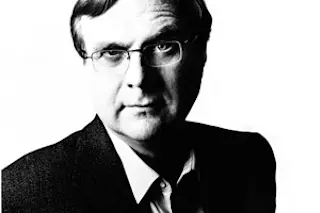Make a list of common boyhood dreams and Paul Allen will very likely have lived most of them. Start your own company and make a gazillion dollars? Check. Own two professional sports teams? Check. Play lead guitar in rock band? Check. Build a rocket to fly people into space? Check. Make giant telescope to search for aliens? Check. Crack the mystery of the human brain? Well, he’s working on it.
The seminal moment in the life of one of the world’s wealthiest men is often pegged as the time, in 1975, when he persuaded his high schoolfriend Bill Gates to drop out of Harvard University and co-found a company called Microsoft. But since leaving the software giant in 1983after being diagnosed with Hodgkin’s lymphoma—and then facing down the disease—Allen has lived a dizzying array of second lives. Drawing on his Microsoft-stock fortune, today estimated at $22 billion, he has funded ...















